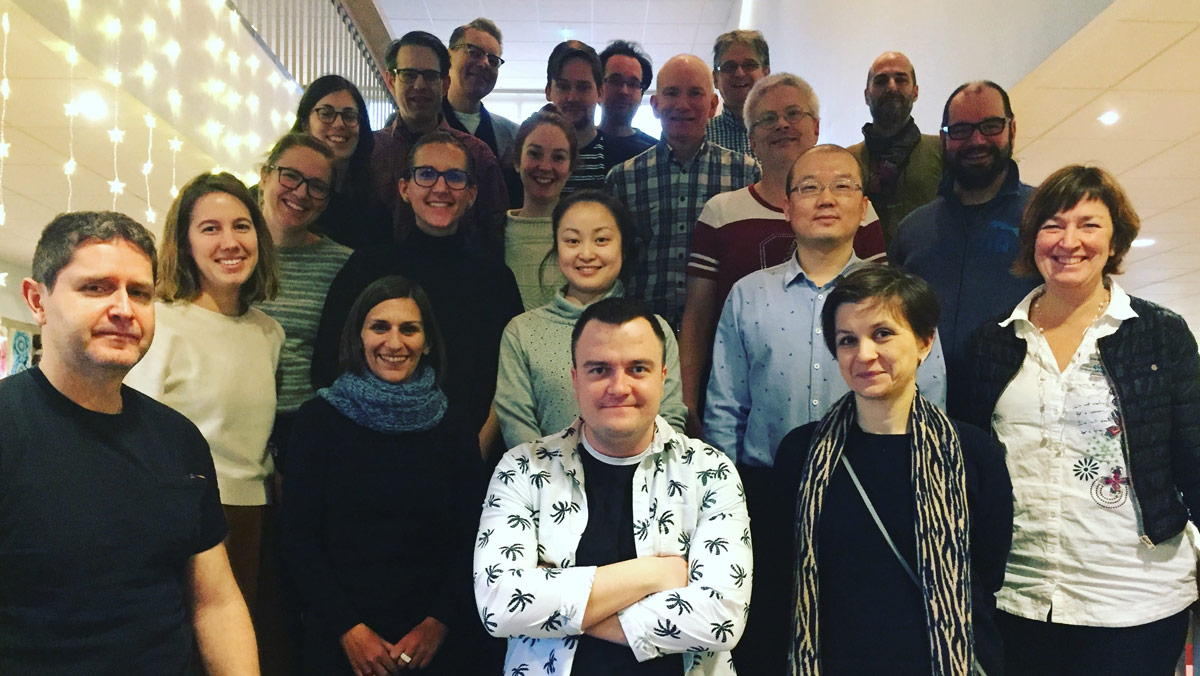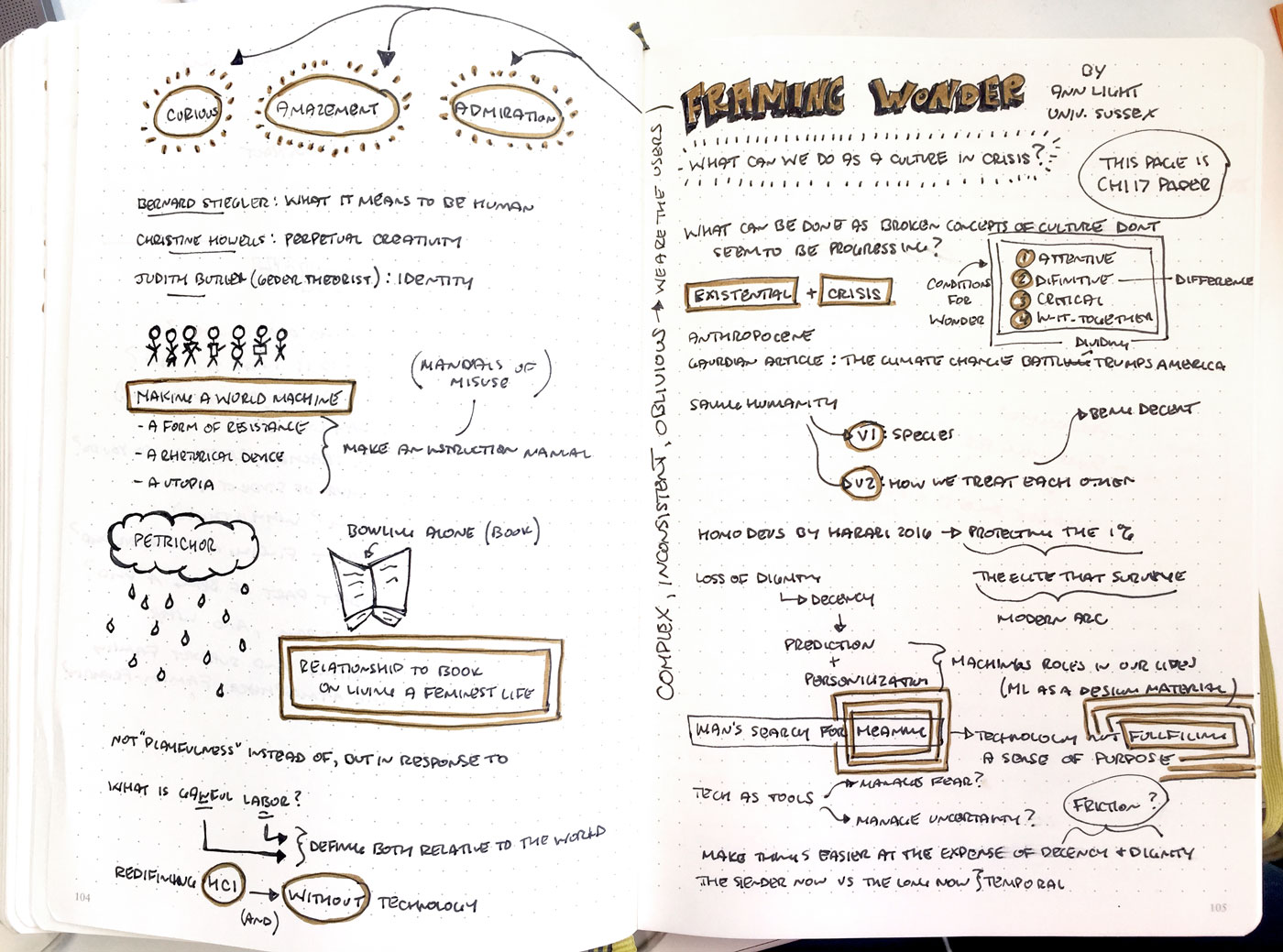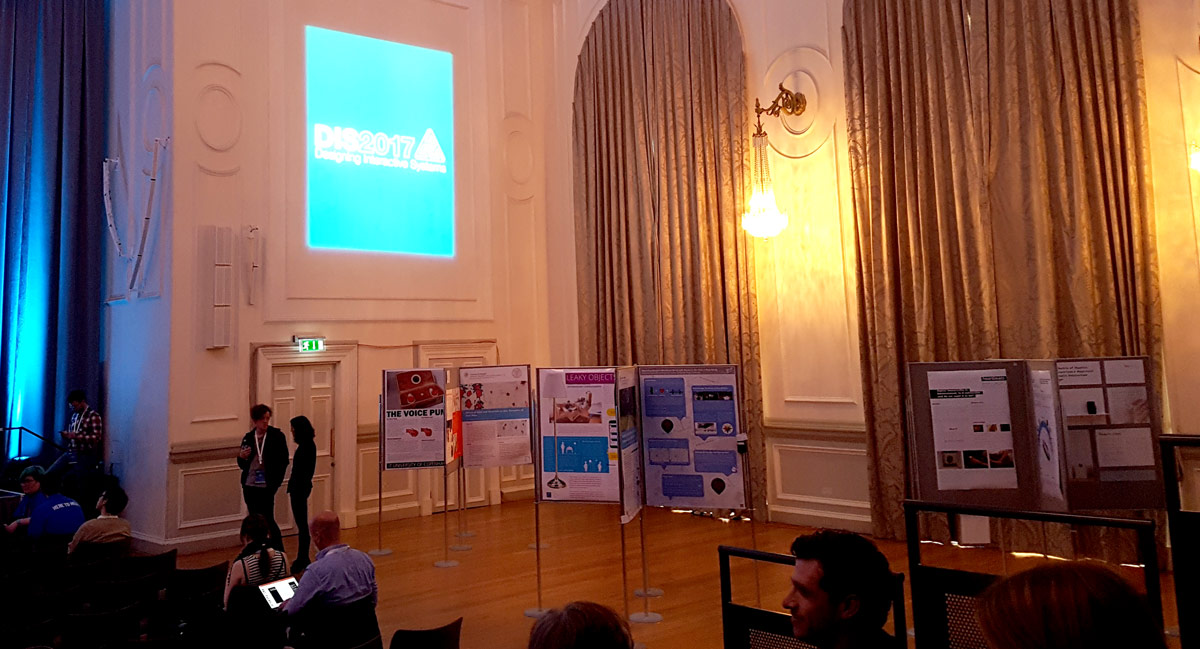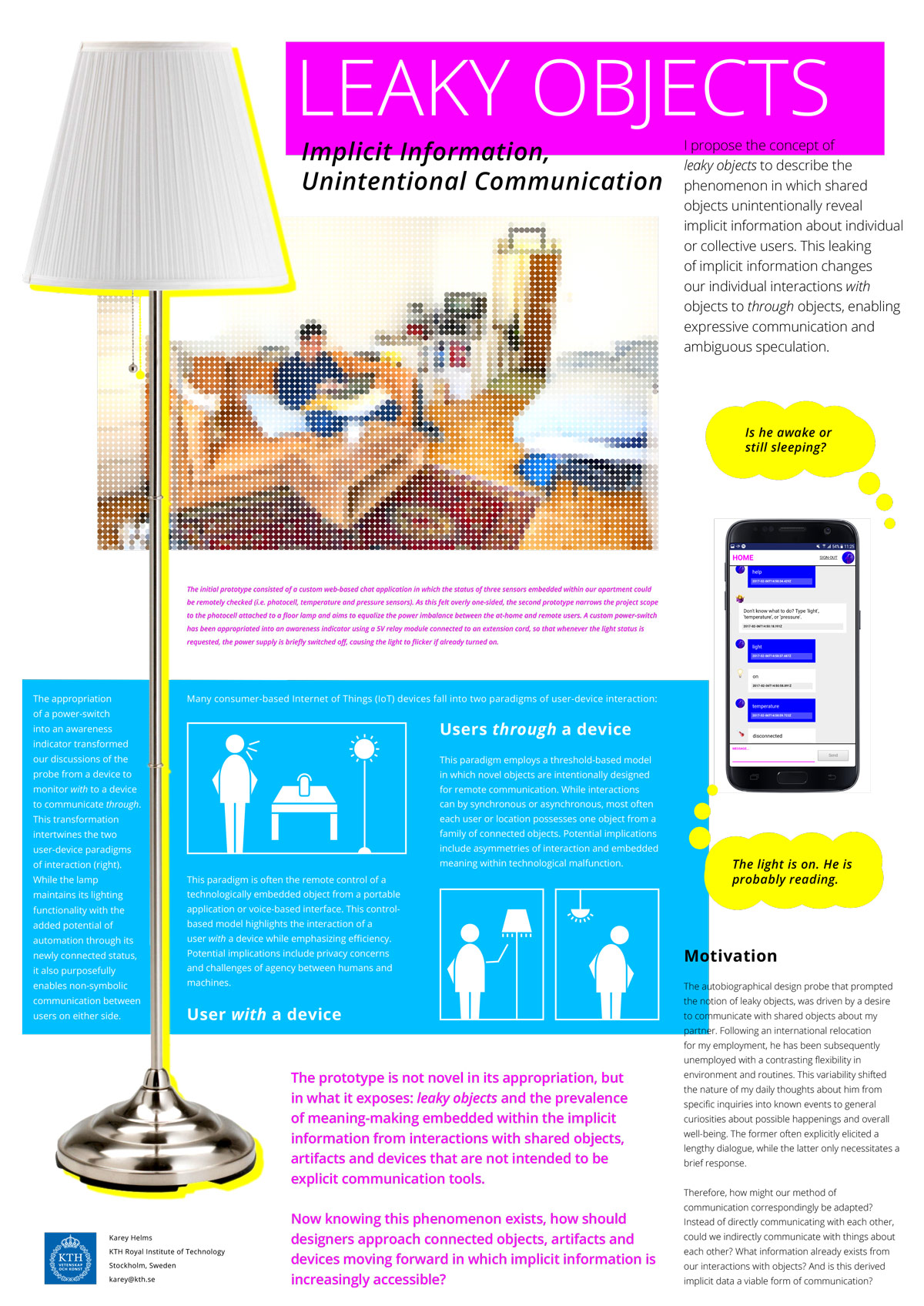Category: KTH Royal Institute of Technology
CHI 2018 – Attending Workshop on HCI Outdoors
This year I’ll be going to CHI 2018 as a student volunteer and to attend the workshop HCI Outdoors: Understanding Human-Computer Interaction in the Outdoors. Very much looking forward to connecting with the HCI outdoors community for a new research project!

A Walk in the Woods: Gear and Infrastructure in the Outdoors (position paper PDF)
In this position paper, we describe an initial research activity, a short walk in the woods, to position our interest in HCI and the outdoors. We present three preliminary reflections from our hike on relationships with gear and infrastructure that enable meaningful outdoor experiences. These include parallels between packing gear and preparing devices, contrasting notions within bodily comfort and brand allegiance, and safety bubbles enabled by actual or expected infrastructures.
AAAI 2018 – Accepted Spring Symposia Papers
Two papers were accepted to the AAAI 2018 Spring Symposia: Design Methods to Investigate User Experiences of Artificial Intelligence for The UX of AI symposium and The Smart Data Layer for Artificial Intelligence for the Internet of Everything symposium. I’ll be presenting the former at Stanford at the end of March, bellow is the abstract.

Design Methods to Investigate User Experiences of Artificial Intelligence
This paper engages with the challenges of designing ‘implicit interaction’, systems (or system features) in which actions are not actively guided or chosen by users but instead come from inference driven system activity. We discuss the difficulty of designing for such systems and outline three Research through Design approaches we have engaged with – first, creating a design workbook for implicit interaction, second, a workshop on designing with data that subverted the usual relationship with data, and lastly, an exploration of how a computer science notion, ‘leaky abstraction’, could be in turn misinterpreted to imagine new system uses and activities. Together these design activities outline some inventive new ways of designing User Experiences of Artificial Intelligence.
PhD’ing – Writers’ Retreat, Project Offsite, Outdoors Research, and Making Preciousness
Today I saw a meme on Instagram which said, “We are now entering the third month of January.” I couldn’t relate more! And looking back over the past few weeks, cannot believe all that has already happened in 2018.

Writer’s Retreat
Following a paper deadline in early January, my department at KTH (Media Technology and Interaction Design) kicked off 2018 with a writers’ retreat. What happens at a writers’ retreat? We book a venue in the Stockholm archipelago for three days and two nights, and write. And sauna and winter swim, but mainly write. The primary purpose of the retreat is to provide time and space away from everyday academic duties, from teaching to admin responsibilities, in order to focus on increasing the quality and quantity of our writing output. During the three days, we follow an agile framework in which junior/senior pairs write in ~45 minute sprints and then provide ~15 minutes of feedback. In addition to intense writing blocks, lunches, dinners, and evening activities provide ample opportunities to better know our colleagues professionally and personally. Though equally as exhausting as the writing, this social time I find incredibly valuable in creating a continued collaborative culture at work.
During this year’s writing camp I started a paper on a Pee-ometer, a recent project by Master’s students that I proposed and supervised in which they prototyped a wearable device that predicts when a user has to pee to investigate Machine Learning as a design material.
Project Offsite
In mid January, the Smart Implicit Interaction project had a two day project offsite. As the project is composed of differing philosophical and methodological backgrounds – i.e. Artificial Intelligence, Social Sciences, and Interaction Design – the first day consisted of a beginners overview into reinforcement and representational learning in neural networks to introduce technical terminology and objectives. During the second day, all of the sub-projects presented their current status and goals for the year. I specifically presented two ongoing design projects, data-driven design methods and the Pee-ometer. In the former, I discussed early design activities and resulting concepts from investigating the implications of screenshots as a data source. In the latter, I discussed three high-level interests guiding future project directions, including Machine Learning as a design material, interactional loops, and critique and ethics. Overall, it was inspiring to share and strategize better collaborations while revisiting overarching project objectives.
Project Offsite
Last week continued January’s streak of out-of-office research activities and into the forest. To kick off an new outdoors project, myself and three senior researchers went on a mid-week day hike 30 minutes outside of Stockholm. Not only was I surprised at a Professor’s ability to make a fire in the snow, but the excursion was both refreshing and constructive. More in the coming months!
Making Preciousness
And last but definitely not least, friend and fellow PhD student Vasiliki successfully defended her thesis Making Preciousness: Interaction Design Through Studio Crafts. Her opponent Ron Wakkary gave a much deserved brilliant presentation of her work before lengthy discussions with him and the committee. Admittedly, it is selfishly bittersweet to see her finishing as she has been a tremendous support and inspiration during the first year of my own PhD.
TEI 2018 – Studio Call for Participation
Sociomateriality: Infrastructuring and Appropriation of Artifacts
Novel materials and innovative applications can sometimes outweigh a reflective perspective on the roles that objects and materials can play in social life. In this Studio, we want to bring together researchers and practitioners who are interested in exploring design outcomes from a sociomaterial perspective. By having prototypes at the center of the Studio activities, we intend to create prompted speculative fictions that link the material outcomes of design practice to social agency and cultural effects.
This studio will offer an opportunity to examine how objects might participate in social spheres as well as act as material bridges to their design process. We will do this through both hands-on examination of design objects, and inquiry into the infrastructuring and appropriation of these artifacts. The themes that will be examined are agency, material participation, and cultural performance of things. We encourage participants to bring their own prototypes.
We invite scholars and design practitioners from a variety of fields to register on the TEI 2018 website. For any questions, email the workshop organizers at mailto:hello@sociomaterial-things.com.
For any questions, email the workshop organizers at:
mailto:hello@sociomaterial-things.com.
More information you can find at the Studio webpage:
http://sociomaterial-things.com
Organizers
Tom Jenkins – Georgia Institute of Technology
Vasiliki Tsaknaki – KTH Royal Institute of Technology
Karey Helms – KTH Royal Institute of Technology
Ludvig Elblaus – KTH Royal Institute of Technology
Nicolai Brodersen Hansen – TU Eindhoven
PhD’ing – Taboo, Tinkle, Algorithms, and Home
For an autobiographical project building off Leaky Objects, in which I’m allowing myself to undertake a significantly slow design process, this week I read Geography of Home: Writings on Where We Live by Akiko Busch. The book is a collection of beautiful musings organized by room and touches upon notions of comfort, dichotomies between possessions and spaces, clutter, deeply personal rituals, thresholds, processions, and changing functionalities. So much I love in this book while mapping the geography of our tiny home which defies all traditional expectations and conditions. Last year before moving from London to Stockholm, we read The Life-Changing Magic of Tidying Up, an amusing read that we nevertheless abided by and asked everything we own, “Do you bring me joy?” Not only did we end up giving away bags of stuff, but it also prompted many meaningful discussions regarding and aligning views on possessions and a home, in addition to musings around if someday everything will be connected, will all our possessions? And why do we keep them, and do we deserve them if possession implies care, custody, and guardianship? More and more through many of my ongoing projects and initial concepts, I realize I’m interested in overlaps between privacy and care, and perhaps comfort too.
A project I recently started with MSc students is investigating predicting pee habits, which to many is a taboo topic due to the invasive nature of the proposed interaction and an aversion to recognizing private bodily functions. A subsequent discussion with my supervisor on researching taboo topics led to the reading of the paper Accountabilities of Presence: Reframing Location-Based Systems and the website Between the Bars: Human Stories from Prison. In the paper, the authors research paroled sex offenders who are tracked via GPS to explore the intersection between mobility, presence, and privacy; while the website offers a digital platform to share handwritten content from people in prison who do not have access to internet. In both cases, what could be considered extreme or fringe users are researched or designed for, and equally interesting for different reasons, they also serve as interesting case studies that either directly learn from or address the messy realities of society. One of my biggest peeves – designers don’t address the messiness of life nearly enough. So while pee might not be prison, it is definitely an everyday and occasionally very messy, mundane, and universal reality that should not be ignored as I believe there is much to be gained from deviating from designing only delightful experiences.
On a fun, related note, I recently found out that Engelbart conceived what he called the “tinkle toy”, a small waterwheel in a toilet bowl that would spin when pee was run over it, serving as a potty-training aid for boys as the interaction was designed to be an incentive to pee in the toilet. From Markoff’s What the Dormouse Said: How the Sixties Counterculture Shaped the Personal Computer Industry.
A week or two ago, it was difficult to miss Algorithms as culture: Some tactics for the ethnography of algorithmic systems on Twitter. Found it incredibly informative and a nice compliment to Dourish’s The Stuff of Bits: An Essay on the Materialities of Information, which I started last week for implicit interaction book club. The paper also led me to these slides The algorithm multiple, the algorithm material: Reconstructing Creative Practice – in which I was thrilled to see my former UVa architecture professor and brief employer Jason Johnson of Future Cities Lab mentioned.
Lastly, this morning I found this open source software by Rebecca Fiebrink for real-time, interactive Machine Learning that hopefully I can use with Arduino.
PhD’ing – Wonder, Autonomy, Frameworks, and Infrastructures
Trying something new with the aim of semi-regular updates regarding what I’m reading, working on, and thinking about.

Last week had a short chat with Ann Light from the University of Sussex regarding my work and attended her guest lecture Framing Wonder: Beyond Design for Existential Crisis (sketch notes above). Dark yet very inspiring talk and highly recommend her related paper Design for Existential Crisis from CHI17. Both the talk and her paper inspired me to look into care ethics and feminist theory regarding my work.
For a recent paper and my ongoing multi-disciplinary project work, have been thinking a lot about Terry Winograd’s Shifting viewpoints: Artificial intelligence and human–computer interaction, in particular how to work across philosophical and methodological differences.
Based on a colleague recommendation, recently listened to Our Robots, Ourselves: Robotics and the Myths of Autonomy by David Mindell, a very accessible contribution to discourse on the meaning of autonomy. Throughout the book, within each of many case studies, he repeatedly challenges listeners (readers) to ask, ‘Where are the people, which people are they, what are they doing, and when are they doing it?” as he proposes an emphasis on human-computer relationships rather than the idea or potential of replacement. My favorite of his examples regards remote control of Mars rovers from Earth bound operators and the coinciding debate if presence can be felt at such a distance and with significant time delays – is remote presence real presence?
Last week discussed Things That Keep Us Busy: The Elements of Interaction by Lars-Erik Janlert and Erik Stolterman in a research book club with a focus on Implicit Interaction. I found the book an easy read as it was very much like a collection of papers (which most of it draws from). While I appreciated the provision of definitions, frameworks and objective perspective – as in taking the object’s instead of the user’s perspective – overall there was much I disagreed with, in particular the notion that implicit interaction decreases interactivity, and found it difficult to maintain a narrow perspective that doesn’t regard the social or systemic implications. Perhaps also, it seemed to contrast philosophically with Dewey’s Art of Experience which I am reading for a PhD course on the theoretical foundations of UX, and as a design researcher situated in a technical university am over-resisting the application of frameworks upon a field dependent on embracing the subject, chaotic, and messy nature of the world.
Attended a great talk by my friend Lorenzo at IxDA Stockholm’s event Questions and answers in the design process with Nordic Morning. Great nuggets regarding the materialization of cultures to engage people in discourse and materialization of infrastructures to enable designers to transform them. Definitely calls for a revisit of his paper Materializing infrastructures for participatory hacking.
Lastly, in addition to a bunch of course grading, this week I’ll be continuing concepts derived from a recent project workshop on designing with data and starting a new project with three KTH master’s student on prototypes to probe the notion of training when approaching Machine Learning as a design material. A related paper includes UX Design Innovation: Challenges for Working with Machine Learning as a Design Material.
DIS 2017 – Poster Presentation of Leaky Objects
Last week at DIS 2017 in Edinburgh I presented a poster (pdf) for my work-in-progress Leaky Objects: Implicit Information, Unintentional Communication. Very thankful for the discussions and feedback!

